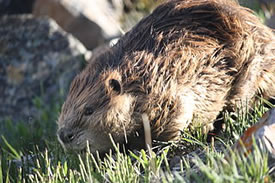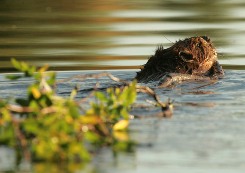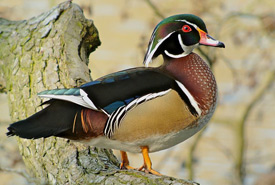Be a beaver believer

Beaver (Photo by Makedocreative/Wikimedia Commons)
Aside from the long list of initiatives celebrated today, April 7 is also a day to celebrate beavers!
For starters, here’s a little beaver-inspired anecdote from our Alberta office:
“There was once a young man who walked to work every day. One morning he saw a beaver in the river. He mentioned this in the staff meeting and said, 'This morning I saw a beaver walking to work!'

A beaver carries a willow branch across the water. (Photo by Steve Hillebrand, courtesy of USFWS)
Everyone looked at him in amazement, and laughed. He then sheepishly realized his mistake and said again, ’This morning on my walk to work, I saw a beaver.’ That was far more believable. And everyone stopped laughing.”
Although beavers may not have office jobs, they are known to be hard workers. All jokes aside, how much do you know about North America’s largest rodent? Here are 11 fun facts to let you beef up your beaver knowledge:
Physiology and behaviour
A damming construction

Wood duck (Photo by Frank Vassen/Wikimedia Commons)
Truly, the importance of beavers to other wildlife should not be undermined. Beavers work hard at making ponds and wetlands, which are really important for waterfowl (nesting and feeding) and many types of fishes. Take wood ducks for example. The beaver pond not only creates open water/wetland habitat for the ducks, but the flooding often kills large trees in which the wood ducks (cavity dwellers) nest. For fish, sometimes the pond is the only deep water that remains during low water levels.
So for all the things beavers do to contribute to healthy watersheds, there is a need on our end to help maintain wetland habitats for the well-being of this species in return!
Check out some of our beaver stories from the archive and see how this incredibly industrious species is a gatekeeper of our landscapes and watersheds. Happy International Beaver Day!
Beavers: An inconvenient species?
The beaver: Nature’s engineer and…archeologist?
Leave it to beaver: Celebrating Alberta's natural legacy


